Most Popular
Hello Hangeul
-
1
Welding book first in vocational Korean series for foreign labor
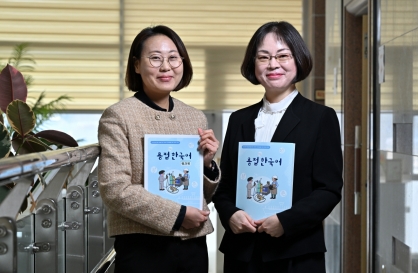
-
2
[Korea Beyond Korea] In Sao Paulo, horizons expand for Korean studies
![[Korea Beyond Korea] In Sao Paulo, horizons expand for Korean studies](//res.heraldm.com/phpwas/restmb_idxmake.php?idx=644&simg=/content/image/2023/11/20/20231120000619_0.jpg&u=20231206104853)
-
3
In Brasilia, worldly dreams are born from Korean classes
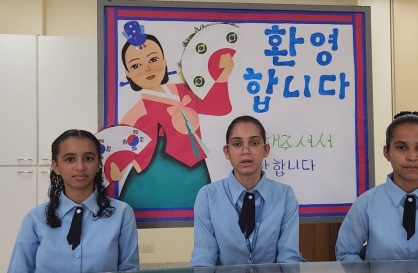
-
4
Americans seeking to visit Korea learn the language in LA
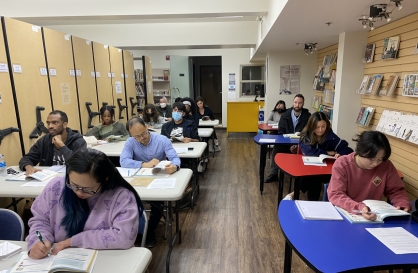
-
5
[Korea Beyond Korea] Berlin, Europe's Korean Studies hub, nurtures next-gen experts, scholars
![[Korea Beyond Korea] Berlin, Europe's Korean Studies hub, nurtures next-gen experts, scholars](//res.heraldm.com/phpwas/restmb_idxmake.php?idx=644&simg=/content/image/2023/10/18/20231018000929_0.jpg&u=20231023154735)
[Hello Hangeul] Western missionaries did not just spread the gospel, they spread Hangeul
Bible translation project led to proliferation of Korean native writing system
By Choi Jae-heePublished : Feb. 18, 2023 - 16:01
Although Hangeul was created and adopted as the official writing system in mid-15th century, it took nearly 400 years for it to become widely used by the general public. Chinese script was still prevalent, as the ruling elites rejected King Sejong’s invention as a vulgar language of the underclass people.
In the late 19th century and during the 1910-1945 Japanese colonial rule of Korea, interest in Hangeul was renewed on the back of growing nationalist sentiments, and it was Western Christian missionaries who played a crucial role in laying the foundation for the widespread adoption of Hangeul.
Among them was American Horace G. Underwood, the first ordained Presbyterian missionary to come to Korea. He arrived in Korea in 1885, three years after the Joseon Dynasty signed the Treaty of Peace, Amity, Commerce and Navigation with the US, which marked the beginning of diplomatic relations between Korea and a Western state.
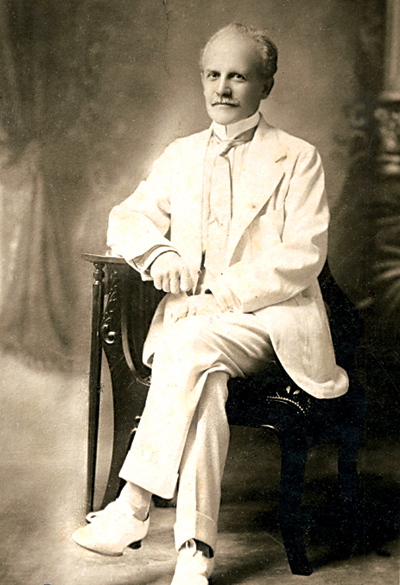
The Bible project
In order to spread the gospel, Underwood and other early missionaries realized the importance of having the Bible translated into the local language. But it was a tall task, as there were no Korean dictionaries available at that time.
In 1887, the Permanent Executive Bible Committee was launched with a vision of rendering the Bible in the plain, spoken language of Koreans. Underwood served as its chair.
Three years later, he published the nation’s first Korean-English dictionary, titled “A Concise Dictionary of the Korean Language,” at a printing house in Yokohama, Japan. A total of 5,293 English words were included in the 560-page dictionary consisting of two parts -- Korean to English and English to Korean.
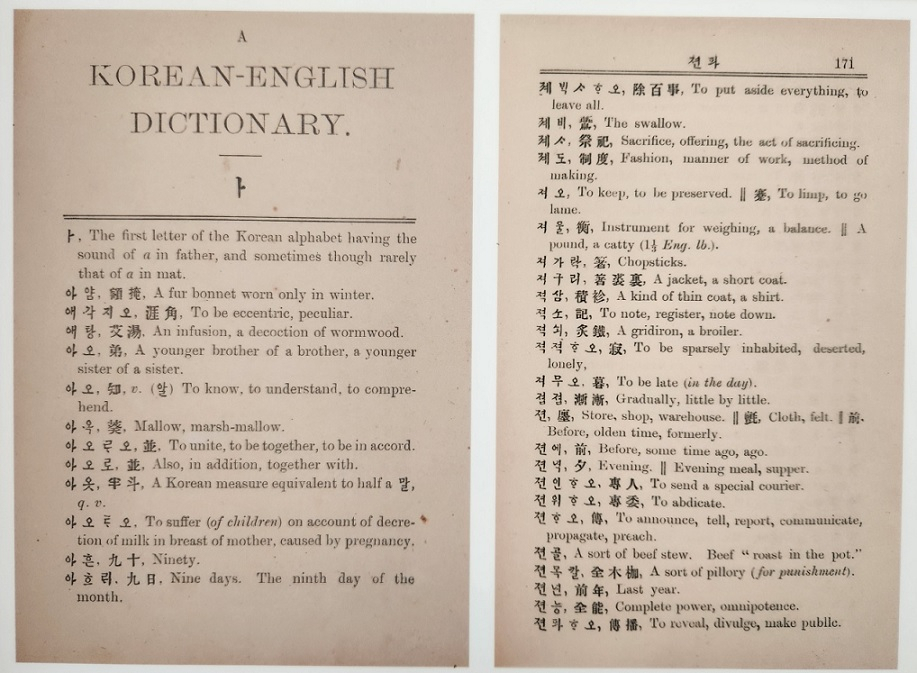
The year 1890 also saw the publication of the first Korean grammar book, also by Underwood. At 425 pages, “An Introduction to the Korean Spoken Language" introduced the phonology and morphology of Korean to English-speaking learners.
In 1893, the work finally began to translate the Bible. Underwood and other members of the committee, including American missionaries Henry G. Appenzeller and Mary Fletcher Scranton, teamed up with Korean Christians to translate the New Testament first.
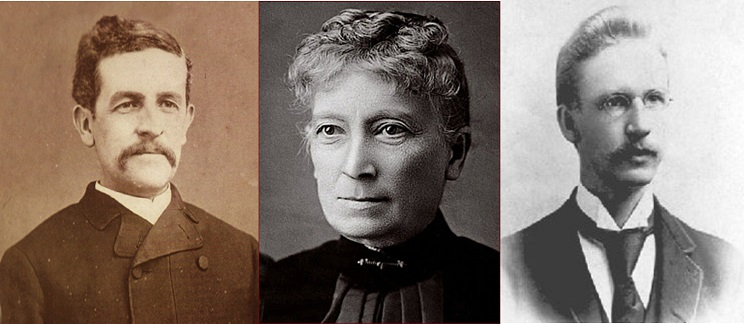
The nation’s first Korean New Testament came out seven years later in 1900 and it served as the impetus for the translation of the Old Testament, a work led by American missionary William Davis Reynolds which lasted for more than a decade until the eventual printing in 1911 of the Korean Old Testament.
The complete Bible, consisting of both the Old and New Testaments, written in the Korean language came out in 1937, after years of corrections and revisions, ready to evangelize Koreans through their everyday language.
Literate commoners
The newly published Korean Bible became a great Hangeul textbook for the uneducated lower class and women in Joseon who could barely read and write the language, improving literacy among common people, according to local theology experts.
Professor Huh Kyung-jin of Yonsei University’s graduate school of theology said “the Korean language Bible had greatly contributed to the popularization of Hangeul in Joseon as it was widely used by churches and individual missionaries to promote a literacy campaign through language classes and private tutors.”
Regardless of whether they accepted the Christian faith, many Koreans read the Bible to learn the Korean alphabet and shared their knowledge with family or neighbors, he added.


Evangelism through Korean language education also laid a cornerstone for later linguistic research on the Korean native script.
For instance, Ju Si-gyeong, one of the founders of modern Korean linguistics, who coined the term Hangeul, enrolled in Pai Chai University in 1894 and delved into the study of the Korean language. Established in 1885 by Appenzeller, the university was the first modernized education institute in the nation.
As the founder of the Korean Language Society launched in 1908, Ju devoted his life to the fight to preserve Hangeul during the Japanese colonial era, when the use of the Korean language was suppressed. In 1910, he published a grammar book, written in Korean, that consolidates the modern-day usage of the Korean language.
“The introduction of the Korean Bible motivated many linguists and students to develop standardized language principles which led to the establishment of a standardized Korean orthography by the Korean Language Society in 1933,” Huh said.
Teachers for the early missionaries
How did foreign missionary pioneers living in Joseon in the late 1880s acquire the local language without schools or books available? They had great private tutors, according to the Institute of the History of Christianity in Korea.
Records show that Underwood studied with a Catholic man named Song Deok-jo who taught Korean to French priests in those days.
After a year of intensive study, the American missionary is said to have reached a level in which he could give sermons in Korean. To further improve his speaking skills, Underwood went out to the streets or mineral springs to communicate with Koreans and preach the gospel.
Appenzeller’s Korean teacher was Jo Han-kyu, a Catholic man who studied Chinese literature. Despite the religious differences, Jo later assisted the missionary with the Korean translation of the Bible.
For James Scarth Gale, a Canadian missionary who came to Korea in December 1888, being part of a Korean community seemed like the fastest way to learn Korean.
After living among foreign missionaries in Seoul for a couple of months, he headed north to Sorae in Hwanghae Province, now part of North Korea, where there were hardly any foreigners and he immersed himself completely among the local people. There, he met a Confucian scholar Lee Chang-jik, who later became his Korean teacher.













![[Korea Beyond Korea] In Sao Paulo, horizons expand for Korean studies](http://res.heraldm.com/phpwas/restmb_idxmake.php?idx=644&simg=/content/image/2023/11/20/20231120000619_0.jpg&u=20231206104853)


![[Korea Beyond Korea] Berlin, Europe's Korean Studies hub, nurtures next-gen experts, scholars](http://res.heraldm.com/phpwas/restmb_idxmake.php?idx=644&simg=/content/image/2023/10/18/20231018000929_0.jpg&u=20231023154735)







![[Today’s K-pop] Treasure to publish magazine for debut anniversary](http://res.heraldm.com/phpwas/restmb_idxmake.php?idx=642&simg=/content/image/2024/07/26/20240726050551_0.jpg&u=)